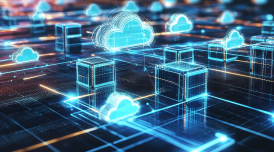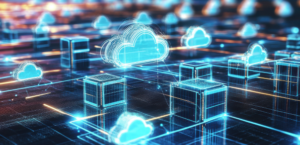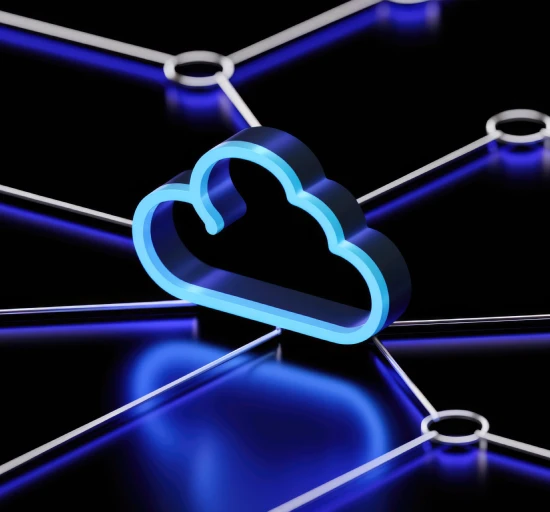
It is evident that APIs are revolutionary in the software development world. They provide developers with a way to access data and functionality from other applications, making it possible to create integrations and mashups that would otherwise be impossible. APIs have been around for years, but they’ve only become more critical in recent years as the need for data integration has increased.
We can expect to see more specific API trends as we get closer to the end of 2022 and move into the future. In this article, we’ll explore some of the API trends that are likely to emerge in 2023 and beyond. From low-code platforms to serverless architecture, these trends will shape the way software is developed in the years to come.
1. Serverless Architecture
Serverless architectures allow developers to build and run applications without worrying about provisioning or managing servers. It means that developers can focus on building their applications rather than managing infrastructure.
Serverless architectures are also very cost-effective because you only pay for the resources you use. There is no need to pay for idle servers when you're not using them. It makes serverless architecture an attractive option for many organizations, especially as they are also very scalable. Since there are no servers to manage, it's easy to scale up or down as needed, making them ideal for applications that experience variable or unpredictable loads.
2. API as a Product
One trend that is gaining traction is the idea of treating an API as a product. It involves thinking about packaging, pricing, and marketing when it comes to APIs. It's a shift in mindset that can result in developing APIs that are more successful in the marketplace. For example, SaaS companies that provide an API for weather data could offer products related to the app, like a live-streaming weather feed or historical weather data.
3. Chatbots
One of the most popular applications for APIs is chatbots. These are small programs that can mimic human conversation to a certain extent, and they're becoming increasingly sophisticated.
Chatbots are gaining popularity because they provide a more seamless user experience. Chatbots can be integrated with APIs to provide chat functions like customer service, sales, or marketing. A customer service chatbot might be used to answer questions about products or services.
4. API Analytics
API analytics gives businesses the knowledge and intelligence needed to improve performance and scalability. Tracking usage trends, identifying errors, and analyzing data are some of the ways API analytics can help a given business. With big data at an all-time high, API analytics is necessary for success.
API analytics can track several different parameters using different tools. Some of the few different types of tools available are:
- API Management Platforms: These platforms offer some built-in API analytics features, but they vary greatly in terms of the depth and flexibility of those features.
- Log Analysis Tools: These tools are designed to help you analyze log files, which can help track API usage data.
- Application Performance Monitoring (APM) Tools: These tools help you monitor the performance of your applications, including your APIs. They can help track things like latency and error rates.
5. API Security
With the rise of mobile and web-based applications, APIs have become a popular target for attackers. To keep your API secure, you need to stay up-to-date on the latest security trends. Here are some API security trends to look out for in 2023:
- Increased use of API keys: API keys are a common way to authenticate and authorize access to an API. In 2023, we expect to see more companies using API keys as a way to secure their APIs.
- Improved authentication and authorization: Along with increased use of API keys, we expect to see enhanced authentication and authorization methods, including two-factor authentication.
- More use of encryption: Encryption is another vital component of API security. In 2023, we expect to see more companies encrypting their data, both at rest and in transit.
- Better threat detection and response: As attacks on APIs become more sophisticated, companies will need to improve their ability to detect and respond to threats. It will include real-time monitoring and the use of machine learning to predict threats.
6. Open-source APIs
Open-source APIs are one of the most exciting trends in the API industry. By making their APIs available to everyone, open-source providers can create a community of developers who can contribute to the success of the API. In addition, open-source APIs provide a level of transparency that is not often found in commercial APIs. This transparency can be a great way to build trust with your audience. If you're looking for a transparent API with a strong community behind it, an open-source API is likely a good fit for your needs.
7. The Internet of Things
The internet of things, also known as the IoT, refers to the growing trend of interconnectedness between physical objects and devices. This interconnectivity is made possible by embedding sensors and other electronic components into everyday objects, which allows them to collect and share data over the internet.
The IoT is already having a significant impact on several industries, from transportation and logistics to healthcare and manufacturing. And as more and more devices become connected, the potential applications of the IoT are only going to grow.
Wrapping up
It's more important than ever to keep up with the latest technology trends. Staying current on API design trends will prove critical as they directly impact your business. API growth will continue to increase in the next few years as more companies adopt APIs to improve their business operations. The most popular API categories will continue to be those that enable access to data and services, as well as those that allow for the integration of different systems. As to specific API trends, we can expect to see an increase in the use of machine learning and artificial intelligence and the continued rise of microservices.
Shyam Sundar
Technical Architect
Shyam Sundar is a Technical Architect at Tellestia, with a deep passion for building scalable and future-ready tech solutions. He shares insights on architecture, engineering best practices, and emerging technologies.
API Analytics
API Development
API Management
API Policies
API Security
API Trends
API-as-a-Product
APIs
Open Source APIs

























